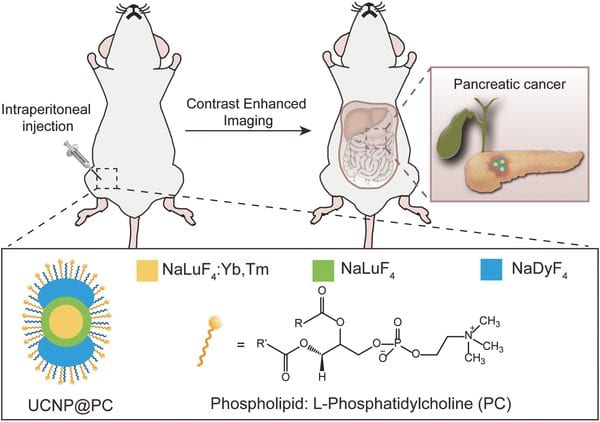Intraperitoneally administered biointerface-camouflaged upconversion nanoparticles can pave the way for early diagnosis of pancreatic cancer through multimodal contrast enhanced imaging.
Pancreatic cancer is one of the deadliest cancer types, and is difficult to target when it reaches an advanced stage. Therefore, early diagnosis plays an important role for improved survival rates. Current diagnosis methods based on imaging are through the intravenous infusion of contrast agents, and do not provide effective diagnostic strategies due to the limited vasculature and thick stroma in pancreatic tumors.

Upconversion nanoparticles (UCNPs) with a unique luminescence mechanism through the conversion of low energy excitation into high energy emissions, have proved to be efficient contrast agents. Therefore, the team led by Prof. Fuyou Li from Fudan University, Shanghai, China fabricated biointerface-camouflaged UCNPs that can be administered intraperitoneally for the effective imaging of pancreatic cancer at early stages. Using a model of orthotopic pancreatic cancer, the authors showed that these dumbbell-shaped phosphatidylcholine-coated UCNPs accumulated efficiently in the tumor upon intraperitoneal delivery and had impressive upconversion luminescence and T2-weighted MR imaging ability. Moreover, the structural design, in combination with the administration route, resulted in enhanced biocompatibility, metabolism and rapid clearance via hepatic pathways.
With these promising results published in Advanced Functional Materials, their strategy of surface coating combined with intraperitoneal injection may contribute to the diagnosis and treatment of other cancer types in the peritoneal cavity. To learn more about these diagnostic nanoprobes, please find the full article here.

















